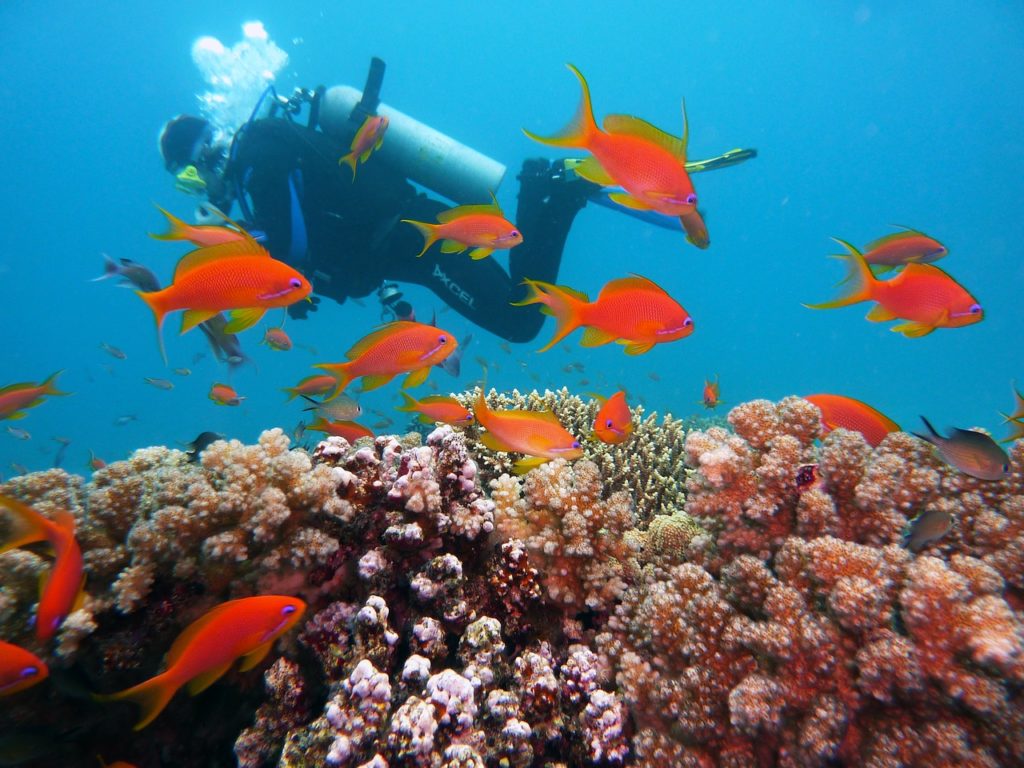Scuba Diving in the Cook Islands
January 15, 2020
It’s summer time again and you’re thinking, “Where should my next vacation trip be?” Well, if you’re looking for gorgeous beaches and crystal clear waters to beat the heat, delve into the waters of the Cook Islands. It is one of Clark Weeks favorite spots for scuba diving.

The Cook Islands
The Cook Islands is a self-governing state in the South Pacific that is in free association with New Zealand. It has 15 islands spread out over a vast area. The islands, particularly in the southern group have a variety of combinations of atoll and high-island formation.
The northern islands are atolls resting on reefs that are rich in marine life. In addition, these islands have a limited range of flora, with pandanus and coconuts predominantly thriving throughout the land. On the other hand, the southern islands are much more fertile and offer a variety of indigenous species of tropical crops which include bananas, yams, taro, sweet potatoes, and breadfruit. The majority of the southern islands’ fauna include farm animals such as pigs, chickens, dogs, goats, and horses.
Cook Islanders have mixed Polynesian ancestry brought about by intermarriage with European, African, and Chinese settlers. Only the inhabitants of the isolated island of Pukapuka are predominantly Tongan and Samoan origin.
Scuba Diving in the Cook Islands
Stunning coral reefs surround lagoons. White sand beaches. Shady palm trees. Volcanic, mountainous islands. Blue, oceanic abyss. Sounds like a dreamy, summer adventure? You have yet to check the action underwater.
The Cook Islands is famous to divers seeking for a thrill in exploring the underwater realm. The main diving sites are the islands of Rarotonga and Aitutaki.
Rarotonga
Most of the diving sites lie in the capital island, Rarotonga, which is well-equipped with resorts and PADI Dive Centers. Airports, restaurants, resorts, and accommodations are well within your budget if you plan to spend your holidays here.
Are you a first-time diver? Fear not. Rarotonga has a lagoon that is protected from the open sea so it’s easy for beginners to learn how to dive here. However, the more experienced divers looking for more exhilarating actions can dive at the passes where the currents are swift. But don’t worry too much about being a beginner. There are about 40 diving sites to explore on the island, comprising beautiful coral gardens, caves, passes, and a few shipwrecks such as the Mataora Wreck. I’m pretty sure you’ll get a lot of diving experience at these sights.
The waters of Rarotonga Island are also perfect for snorkeling. Underwater, you will find an amazing world filled with the beauty of coral reefs and a variety of brightly colored tropical fishes. On the west coast of the island, you can find the Aroa Marine reserve. It is one of the best snorkeling spots because the outlying reef protects the waters from the open sea. No worries about drifting into the biggest ocean in the world!
Aitutaki
Aitutaki is another island much like Rarotonga. It isn’t visited much by tourists because of its hard-to-reach location, but if you’re seeking to dive with an intimate, romantic feel, this is the island for you. The island still offers beautiful sights – turquoise lagoons, palm-fringed beaches, and uninhabited islands. Its main attraction however, is a small islet in the south-east called Tapuaetai or One Foot Island where a tourist can see the best views of island’s lagoons.
The best part of diving in the Cook Islands? It’s the opportunity to bump into one of the largest species of animals in the world, whales. Humpback whales. They pass by Rarotonga and Aitutaki during the summer and autumn season of the Southern Hemisphere when they migrate to warmer waters in the South Pacific.
Best Time to Visit the Cook Islands
Planning on a vacation to Cook Islands? The best time to go there is during the months of May to October, when it is the dry season. The bright, warm sunshine matched with the never-ending water activities – relaxing on the beaches, diving into the clear waters, kitesurfing, whale watching, and even hiking across the islands! August is also an exciting month for Cook Islanders because of the Manureva Aquafest, which is five days of non-stop partying! In late November, you can witness one of the world’s biggest paddling competitions, the Vaka Eiva, which is sure to keep you cheerful before the rainy season begins. The rainy season lasts from December to March which brings a mix of short, heavy downpours and long periods of sunshine.
Clark Weeks Hopes You Enjoy the Scuba Diving
If you do end up going, since Clark Weeks loves scuba diving and the Cook Islands, he hopes you enjoy it as much as he did. For more posts about underwater activities, click here.